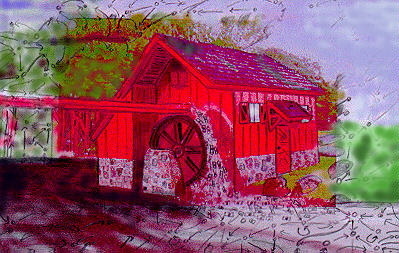“Uh,” I stammered, “those were actually created at my wire-tap; not upstream or downstream.”
“I see,” he said quietly, showing no surprise. “You generated those yourself… and for what purpose?”
I am not sure why I chose to come clean at that moment. Perhaps I felt sorry for him. He was clearly under a lot of stress yet was taking it well. He was the victim of circumstances; an employee working for a corrupt employer in a ruthless business. Maybe I was simply conscious of the fact that Lisa was standing beside me and, having full knowledge of my involvement, would recognize any attempt by me to mislead Rudy or misrepresent facts. For whatever reason, the moment he asked about the replays I decided to tell him the full story. This I proceeded to do.
When I was done, his attitude was one of friendship and comraderie. We were all in this together now. He suggested that we pool our efforts and study the clues together. He pulled a small stack of papers out of the top drawer of his desk. They were computer printouts. Some of the lines on the pages were highlighted with a pink marker. He explained that these were the EFT’s that his department had determined were forgeries. Recognizing a forgery was no easy task since the MAC’s checked out perfectly. The highlighted lines on his printouts were found by investigating payments in a more mundane and conventional manner. Staff members had been studying payment patterns for individual account holders in an effort to weed out regular bill payments such as mortgage payments. When they came upon an unusual or large transaction, bank employees called the account holder for voice confirmation that the payment was proper. This was a pain-staking process and needed to be conducted carefully so as to avoid embarrassment to the bank.
Next Rudy laid a large sheet of paper on his desk. On this sheet was a hand-drawn diagram. The diagram consisted of points and arcs — being computer scientists, Lisa and I both recognized it immediately. It was a directed graph; an abstract data structure. The arcs represented funds transferred from one account to another. The points that were connected by arcs represented bank accounts, and where labelled with account numbers. The direction of the arcs illustrated the flow of money from one account to another. Each arc was labelled with the amount of the EFT it represented.
The first thing that would have struck anybody upon looking at the graph, was the intricacy of the structure. There were many nodes (accounts) — perhaps 50 — but there were far more arcs. There were arcs going everywhere. There were multiple arcs between the same pair of accounts even. Some accounts had as many as fifteen arcs going in and out.
Rudy explained that these represented only forged EFT’s. If the diagram included arcs for legitimate EFT’s it would be far more complex.
“We estimate that we have found fewer than 15% of the forgeries,” Rudy announced. “As you can see, there is an excessive number of them. Most of the forgeries are on bank initiated corrections. Beyond that, there does not appear to be any pattern; they are everywhere and they go everywhere. They are in amounts ranging from ten dollars to tens of thousands of dollars.”
He looked at me sideways as he said this, as if waiting for me to say something or notice something about the graph. Other than the size of the graph and the number of the arcs, I could not see anything remarkable about it. It was a cyclic directed graph with weighted arcs. Nothing more. Rudy paused to mop his forehead with a handkerchief he pulled from his pocket.
“In addition to the amounts, I’ve annotated each arc with a date. I’ve also annotated the account numbers at the nodes with a bank prefix. Very nearly all the forged EFT’s we have found are error-correcting transfers, meaning that they have been assigned a code to indicate that they are funds transfers intended to correct an earlier banking error.”
Some of the arcs had dates other than July 11th. There were many with dates later in that same week, as well as some with dates before the 11th.
When I mentioned this Rudy nodded but explained that far more intriguing was the amounts of the transfers.
“You will notice,” he said, “that the sum of the weights of the in-arcs and out-arcs are equal at each node. For every dollar that is stolen from an account, a dollar is deposited into the same account.”
Amazingly enough, this was true. Lisa and I chose a few nodes arbitrarily and added up the weights. Every time they summed to zero; no net change to the account balances. This was strange.
